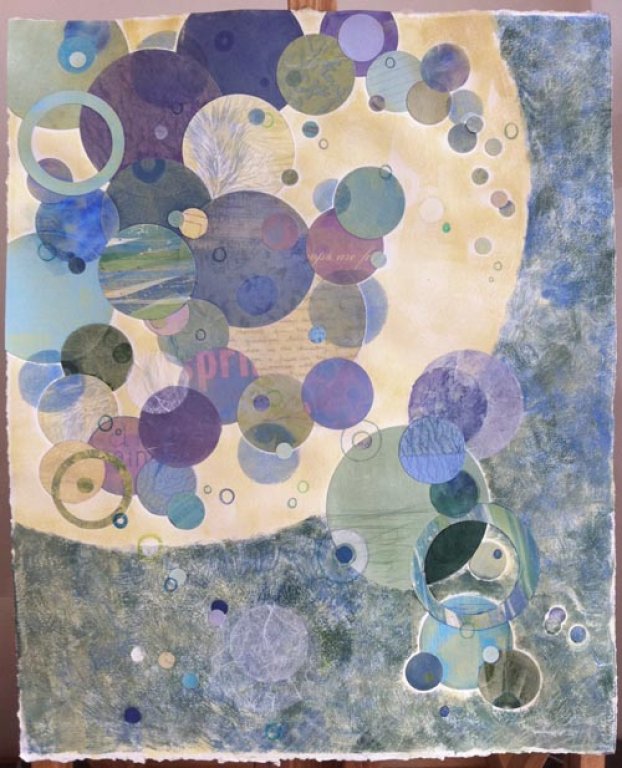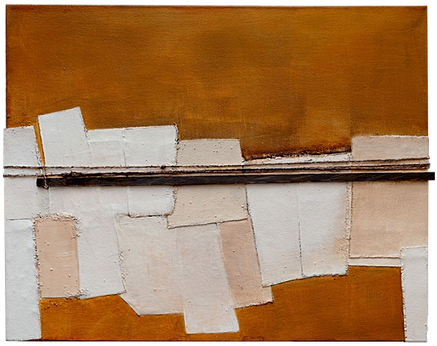Another lovely treat for and from
Lobster & Canary, to start our 2014: an interview with poet Sandra Kasturi about her latest collection,
Come Late To The Love Of Birds, recently published by Tightrope Books, which also put out her debut collection,
The Animal Bridegroom.
Click here to purchase the book. (Full disclosure: Sandra is co-owner of ChiZine Publications, which published my two novels; I received a free advance copy of
Come Late To The Love Of Birds).
Sandra is a Bram Stoker Award-winning editor. CZP won the British Fantasy Award last year and has been nominated for the World Fantasy Award. She identifies closely with speculative fiction,
the new fabulism. Her work is among the best these hybrid genres have produced in recent
years, and is part of the renaissance within fantastical poetry, along with
that of --among others--our fellow CZP author, Helen Marshall, as well as by
Sonya Taaffe, Theodora Goss, and the many talents gathered by Amal El-Mohtar and
Jessica Wick at Goblin Fruit, by Mike Allen at Mythic Delirium,
and by Erzebet Yellowboy at Cabinet des Fees.
I see Come Late
(and Animal Bridegroom), along with the work of Marshall and the
others I list here, as part of an important endeavor within English-language
poetry much more generally: a revitalization of the Romantic mode, building on
Blakean and Wordsworthian tropes and the dreams of Coleridge and Shelley with
sharp-throated words for modern times, not least with a deft ear for the nuances
of gender and the demands of a post-colonialist world. Marianne Moore as one
bridging figure, Jorie Graham another? As I read Sandra's work, I find
myself reaching for volumes by Sharon Olds, by Clayton Eshleman, by Albert
Goldbarth, by Charles Simic. By Alice Oswald, by Sarah Lindsay, by Laura
Kasischke, by Seamus Heaney. Past time for “fantastical poetry” (and isn’t all
poetry fantastical, the changing of words into the world and back again?) to
stake its claim more forcefully in today’s poetry landscape. I hope Come
Late garners the praise it deserves among the readers of Olds, Simic, Heaney
et al.
Question One. The title of your latest collection comes from a passage you read decades
ago by J.A. Baker: “I came late to the love of birds. For years I saw them
only as a tremor at the edge of vision.” And actually you first read the lines
as quoted in a Judith Van Gieson novel; lines that you savored for years,
waiting for the chance to use in a recipe of your own. Tell us more about the
origins of the poems as a cycle: the intertextual tracing, the widening of your
own vision to include birds, your desire to widen vision for others (arguably
the greatest gift of poetry).
Kasturi: Firstly, thanks so much for
having me on Lobster & Canary! And you are very kind in your praise indeed.
My god, to be mentioned in the same breath as Heaney, etc! Swoon.
I was
so struck by that quotation when I saw it in Van Gieson's book,
The
Raptor (a mystery novel, incidentally), that I looked up Baker's book,
The Peregrine, which is where the lines are originally from, and bought a
copy from Abe Books. I think it's out of print now? Anyway,
The Peregrine
is itself an odd thing, and not much is actually known about Baker himself. He
wrote this naturalist's study, but it actually reads like poetry. His passages
are so eloquent and beautiful, I can't even describe them. I'm not a huge
non-fiction reader unless I'm doing research for something specific, but that's
a book that I'd go back to, just for the beauty of its language. I think it
should be on all poets' must-read list! I mean, he's even mesmerizing when he's
talking statistics! But that's not the question.
I often think in
titles, so "come late to the love of birds" was just something ringing in my
head for a long time, and I thought it would be a good title for a book. And
then it just seemed like I was writing poems that involved birds in some way,
without really planning to. It all coalesced when I wrote the first poem in the
book, "Roc" although of course I didn't really think of it as an opening poem
for anything--it was just a thing I wrote and workshopped in my poetry group. So
when I was thinking about my next poetry book, it all came together, and I went,
"Hey, that might be a cool thing to do." I went through my newer poems and
picked out the ones that seemed like they would fit in the books--poems
literally about birds, or about flight, or space travel. Which was when I
realized I had nowhere nearly enough and I'd better get off my ass!
The
thing is--as you start thinking about themes for your writing and pulling a book
together, you start looking at the actual things your poems are about. So I
would really
notice birds in a way I hadn't before. I would notice their
funny little personalities, and how some of them would get cross with each other
and squabble in our backyard. When we were in Rhode Island, I saw this hawk in
the botanical gardens there--which resulted in the poem "One Red Thought." The
movement of birds is like poetry.
Incidentally, Helen Marshall liked the
title of my book so much, that she developed the very naughty habit of writing
all these awesome poems which were perfect for
my book, so I will
obviously have to write poems for
her next book now. Heh.
Question Two. I came early to the love of birds: I started birdwatching
when I was nine years old. So, I am enthralled by your trenchant sketches of
birds as (in your words) “poetry made flesh,” nodding as I see old friends so
well depicted. Since your “conversion,” besides seeing birds for the first
time, have you also found them in literature where you previously had not
noticed them? I am thinking of, to name just a few in a flock: Ted
Hughes...Mary Oliver...the sublime Walton Ford (devious homage to the
magnificent Audubon)...Emily Dickinson...Birds Drawn For John Gould by
Edward Lear...Bartram’s Travels Through North & South Carolina,
etc. and Wilson’s American Ornithology...White’s Natural
History of Selborne...da Vinci’s Codex on the Flight of Birds...from
our medieval forebears, The Parliament of
Fowls...
Kasturi: I think I notice them more in mythology and
folklore or fairy tales. You find them in Grimm and Andersen, and the Greek
myths of course. Weirdly, I don't really read a lot of poetry, but the stuff I
love, I love a lot. People like Anne Carson, Anne Sexton, Laura Lush, David
Clink, Helen Marshall of course.
But I remember the birds in the Mary
Poppins books best, I think. P.L. Travers was such a weird and funny writer! I
love her so much. She anthropomorphized birds (and animals) of course, but I'll
always remember Mary Poppins arguing with the cheeky starlings.
And you
know I grew up loving dinosaurs--all those in-school claymation "documentaries"!
How I loved them. I'm still sad brontosaurus doesn't really exist. And later:
Ray Harryhausen! Bliss. So when the theories about how dinosaurs evolved into
birds, it all seemed to make a kind of exquisite sense.
Question Three. Let’s talk prosody for a moment. When you compose a
poem such as “The Flowering Tide” (“Palelemon sunstreaks arc wide amid snow- /
falls of cherryblossoms that shiver through chills/ or warmth, fickle gusts of
vernal air that blow/ from the east.”), do you have the meter already in your
head before the words come, or do the words tumble out, challenging you to order
their rhythm? Here is another passage that spurred this question, from “Poets
and Other Birds of Prey”: “Such exsanguinations had to be effected personally:/
flesh rendered by others/ was, even at the very moment of death,/ already too
old to be touched./ You were fastidious.” Or likewise this, from “Cardinal”:
“Look two cardinals perch on a still-bare tree,/ one red, one brown, watching,
sharp-eyed; the least/ movement sends them skyward, winging free/ across the
slow evening.”
Kasturi: I must confess that with "The Flowering
Tide" it was terribly contrived. I had this "Sonnet a Week" project that I was
doing where I was trying to write, yes, a sonnet a week. Because I'm not really
a formal verse person, so I wanted to see if I could do it. One week I couldn't
think of anything, but I wanted to write a spring poem, so I asked my friend,
writer Jason Taniguchi, to give me the end-rhyming words. So he did, but very
naughtily gave me only winter words! Which you can see if you look at the last
word of each line. But I like restrictions when writing--I think sometimes the
more severe the straitjacket, the cleverer you are forced to be. So it expanded
the way I thought and the way I wrote, which I think is good. I sort of trailed
off before the year was out though--so really, it ended up averaging out to a
sonnet every two weeks, I think.
"Cardinal" of course is also a sonnet.
I wrote it for my great-uncle after he died and read it at his funeral. Again,
the severity of restrictions involved in a form like the sonnet I think lend
themselves beautifully when a tremendous amount of emotion is involved with what
you are doing. It keeps you from veering off into hysteria or maudlin thoughts.
Allows you to say things and makes it easier to handle all the unhappiness and
despair you feel when you lose someone you love greatly.
As for "Poets
and Other Birds of Prey"--my god, I wrote that a loooong time ago. It might
actually be the oldest poem in the book. I know I absolutely did not think about
meter then; I do it far more now. Some things seem to lend themselves naturally
to certain rhythms, and you usually know from the first couple of lines what
it's going to be. I've had things change from very formal verse to free verse,
because I was trying to force the form and it wasn't working. And I've done it
the other way round too--realized that it was a hodgepodge mess and it needed
more stricture and then gone off into the formal vein.
Isn't "stricture"
a wonderful word? It sounds like a poison, or something you'd add to a chemical
solution to give colourful results.
[Second Half Of Interview To Come Next Sunday]







































